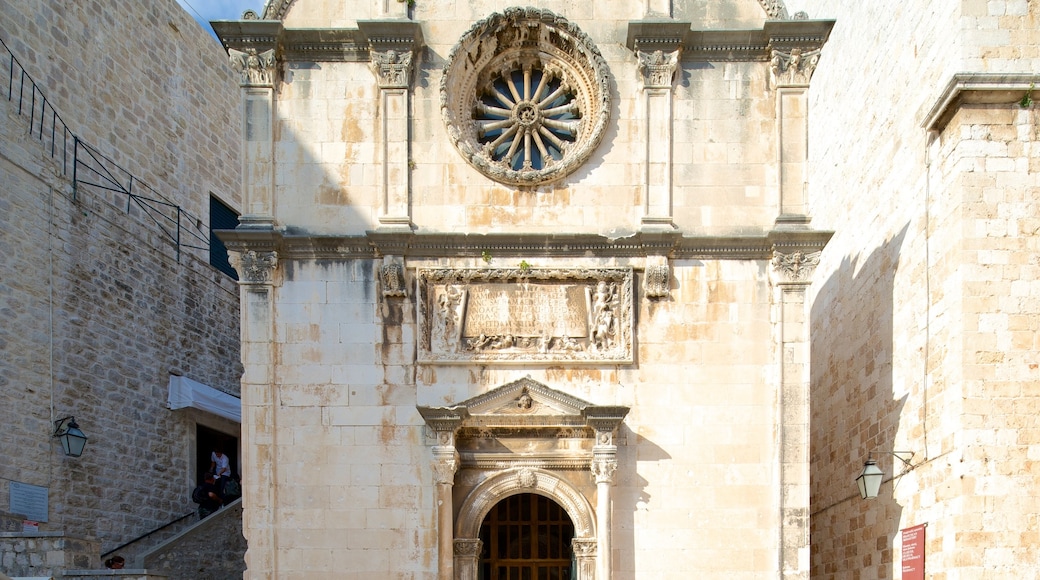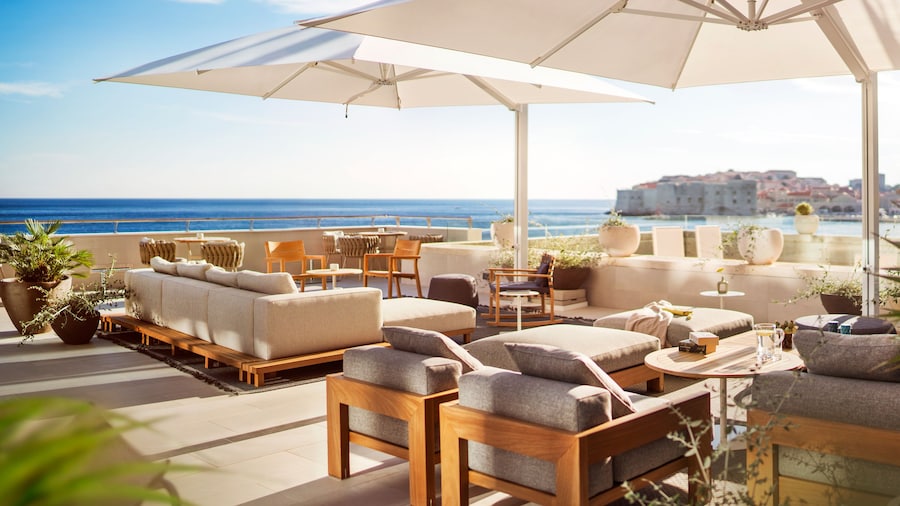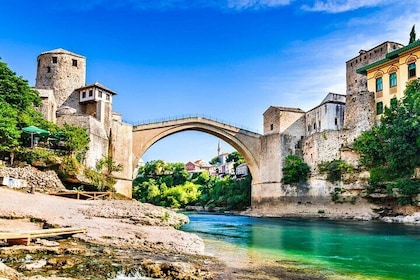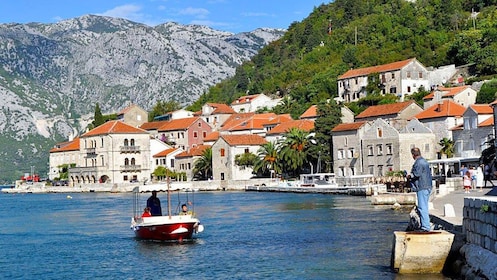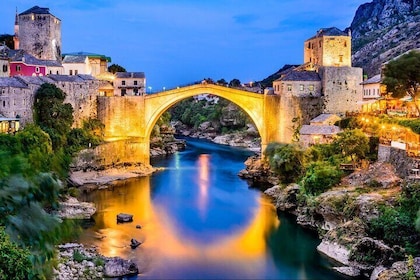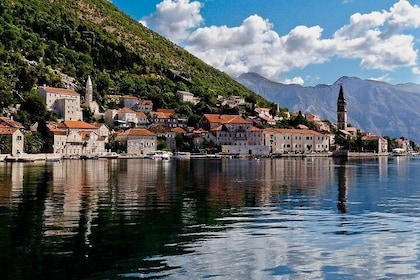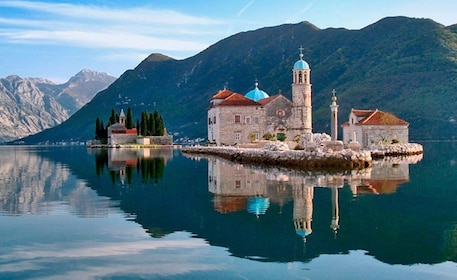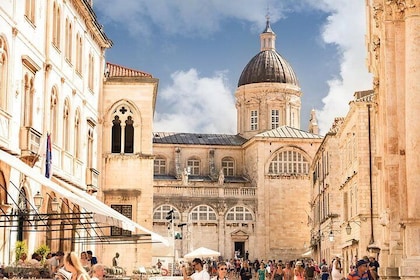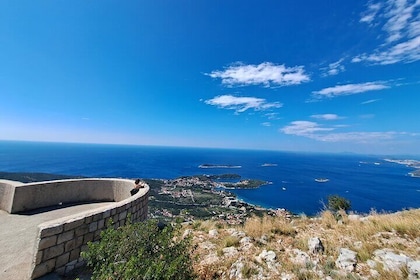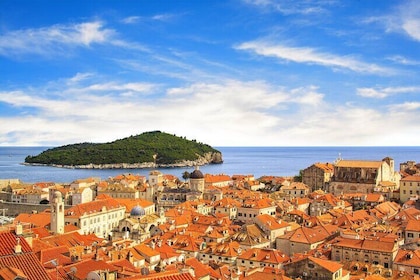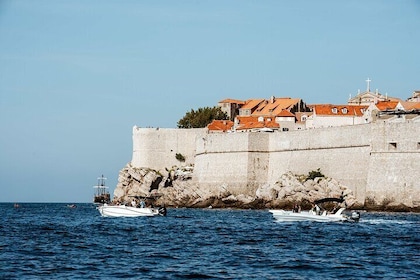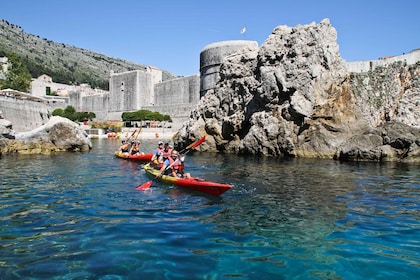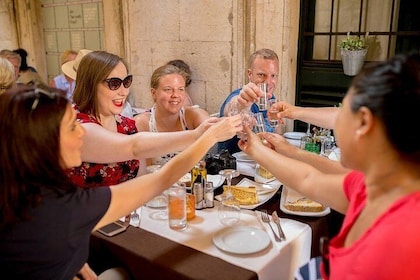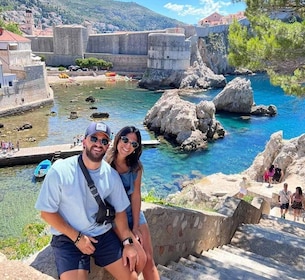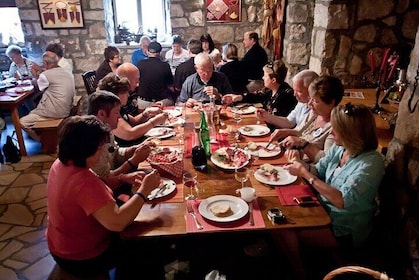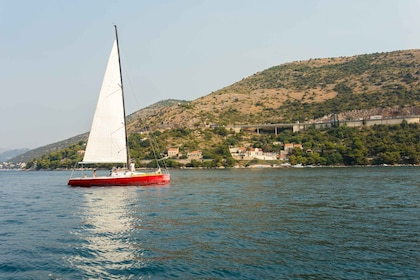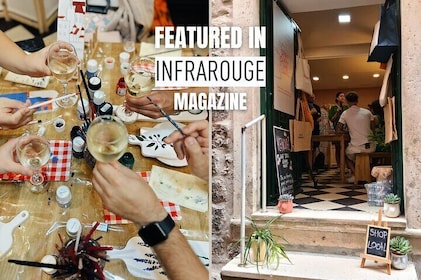Wedged between Pile Gate and the Franciscan Monastery is St. Saviour Church, one of the few structures to survive the earthquake of 1667. The small, modest building is noted for its renaissance architecture which is said to have influenced the design of other churches in the region.
The church is dedicated to Jesus Christ and was constructed in the early 16th century as a show of gratitude by Dubrovnik’s residents for surviving an earthquake in 1520. The building you see today has changed very little since then.
Stand in front of the church to observe its architectural details, or sit on the ledge of Onofrio's Fountain opposite the front door. Admire the classical Dalmatian rosette window, one of the façade’s prominent features. See if you can make out the Latin inscription below it that expresses the town’s gratitude for being spared. Below this is a small carved figure of an angel's head. On the arch above the door is a faded monogram of Jesus. You can just about make out the letters of this traditional Christian symbol. They are the first three letters of the Greek name for Jesus.
Look at the pointed arches above the windows on the sides of the church. These are one of the building’s gothic elements.
Step inside the church and study the paintings and sculptures of religious figures. Cast your eyes upward at the cross-ribbed ceiling, another Gothic element in the church’s design. Go up to the main altar to inspect the impressive altarpiece behind it. Sit on one of the wooden pews and enjoy the peace and quiet, away from the old town’s busy streets.
St. Saviour Church is used as an exhibition hall and concert venue. The building is open daily and admission is free. Occasionally, it will close to host events.
The church is situated at the beginning of the Stradun, the old town's main street.
